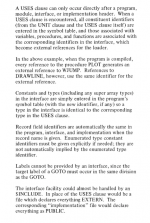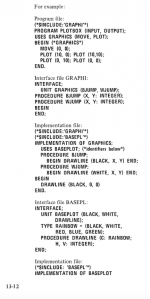Old_hitech
Experienced Member
I have a IBM PC RevA with 128K RAM and I would like to learn how to write a Pascal program using graphics. I am using the IBM PC Pascal Compiler from 1981 and reviewed this example program in the Pascal Compiler manual
Program file:
(*$INCLUDE:'GRAPHI*)
PROGRAM PLOTBOX (INPUT, OUTPUT); USES GRAPHICS (MOVE, PLOT);
BEGIN (*GRAPHICS*)
MOVE (0, 0);
PLOT (10, 0); PLOT (10,10); PLOT (0, 10); PLOT (0, 0);
END.
I have entered this program and when I try to compile it I get error
File Access Error in GRAPHI; Code: 1004
Compiler Cannot Continue
Code 1004 error is Error During Opening of Existing File
Appreciate any help with this. If someone has a example Pascal program that uses graphics for the 1981 Pascal Compiler, I would really appreciate that.
-Gil
Program file:
(*$INCLUDE:'GRAPHI*)
PROGRAM PLOTBOX (INPUT, OUTPUT); USES GRAPHICS (MOVE, PLOT);
BEGIN (*GRAPHICS*)
MOVE (0, 0);
PLOT (10, 0); PLOT (10,10); PLOT (0, 10); PLOT (0, 0);
END.
I have entered this program and when I try to compile it I get error
File Access Error in GRAPHI; Code: 1004
Compiler Cannot Continue
Code 1004 error is Error During Opening of Existing File
Appreciate any help with this. If someone has a example Pascal program that uses graphics for the 1981 Pascal Compiler, I would really appreciate that.
-Gil


